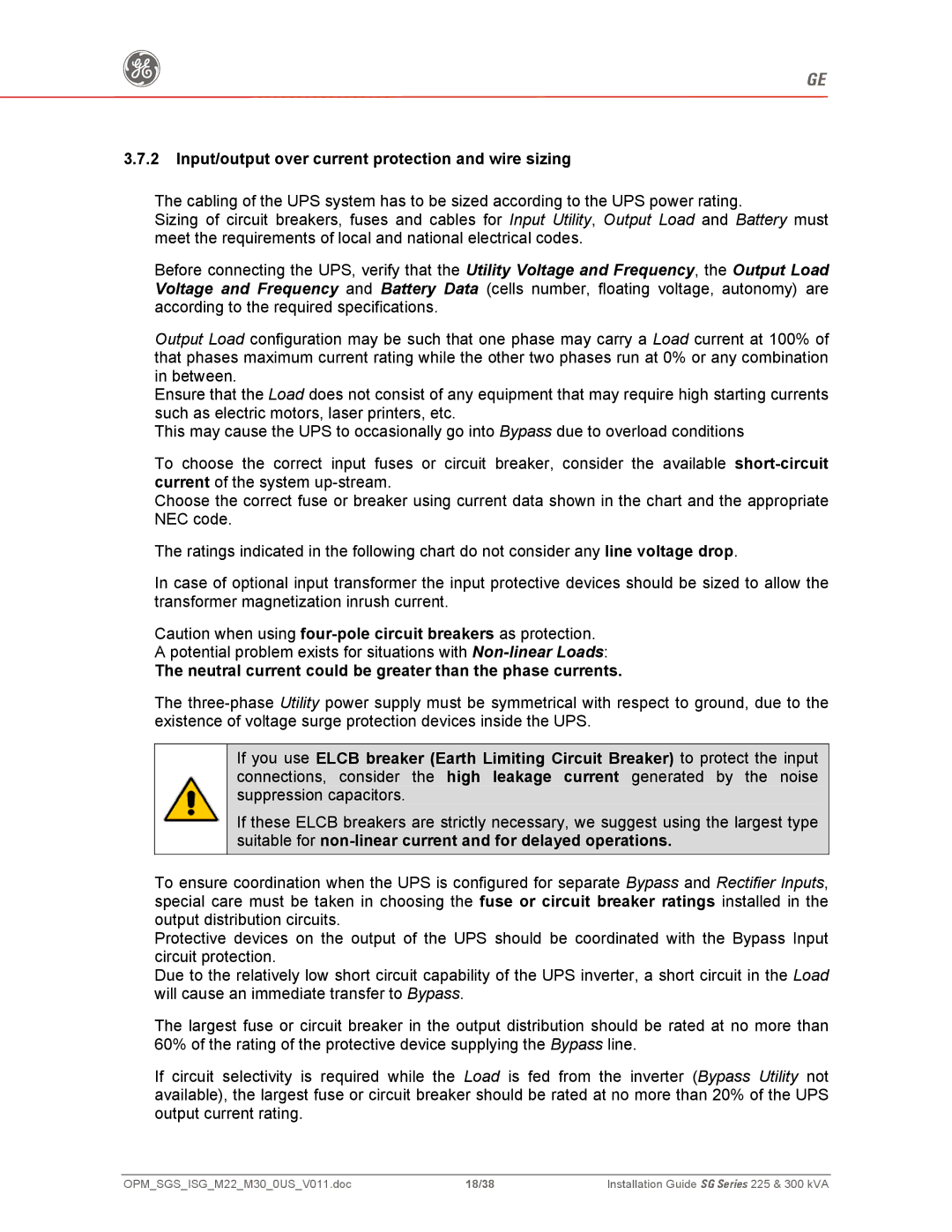
g
GE
3.7.2Input/output over current protection and wire sizing
The cabling of the UPS system has to be sized according to the UPS power rating.
Sizing of circuit breakers, fuses and cables for Input Utility, Output Load and Battery must meet the requirements of local and national electrical codes.
Before connecting the UPS, verify that the Utility Voltage and Frequency, the Output Load Voltage and Frequency and Battery Data (cells number, floating voltage, autonomy) are according to the required specifications.
Output Load configuration may be such that one phase may carry a Load current at 100% of that phases maximum current rating while the other two phases run at 0% or any combination in between.
Ensure that the Load does not consist of any equipment that may require high starting currents such as electric motors, laser printers, etc.
This may cause the UPS to occasionally go into Bypass due to overload conditions
To choose the correct input fuses or circuit breaker, consider the available
Choose the correct fuse or breaker using current data shown in the chart and the appropriate NEC code.
The ratings indicated in the following chart do not consider any line voltage drop.
In case of optional input transformer the input protective devices should be sized to allow the transformer magnetization inrush current.
Caution when using
Apotential problem exists for situations with
The neutral current could be greater than the phase currents.
The
If you use ELCB breaker (Earth Limiting Circuit Breaker) to protect the input connections, consider the high leakage current generated by the noise suppression capacitors.
If these ELCB breakers are strictly necessary, we suggest using the largest type suitable for
To ensure coordination when the UPS is configured for separate Bypass and Rectifier Inputs, special care must be taken in choosing the fuse or circuit breaker ratings installed in the output distribution circuits.
Protective devices on the output of the UPS should be coordinated with the Bypass Input circuit protection.
Due to the relatively low short circuit capability of the UPS inverter, a short circuit in the Load will cause an immediate transfer to Bypass.
The largest fuse or circuit breaker in the output distribution should be rated at no more than 60% of the rating of the protective device supplying the Bypass line.
If circuit selectivity is required while the Load is fed from the inverter (Bypass Utility not available), the largest fuse or circuit breaker should be rated at no more than 20% of the UPS output current rating.
OPM_SGS_ISG_M22_M30_0US_V011.doc | 18/38 | Installation Guide SG Series 225 & 300 kVA |
